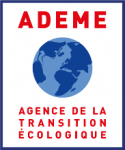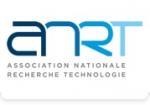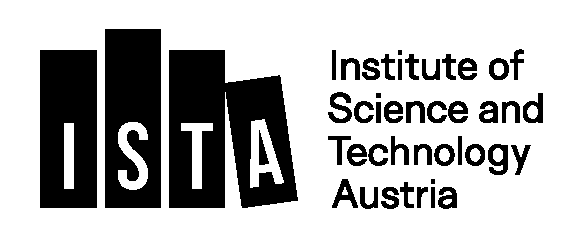Development of PROTAC molecules to treat parasitic diseases
| ABG-133661 | Master internship | 6 months | around 550 euros |
| 2025-10-02 |
- Biology
- Biochemistry
- Chemistry
Employer organisation
Supervision:
Albane le Maire DR CNRS Les récepteurs nucléaires, intégrateurs de signaux endogènes et environnementaux Centre de Biologie Structurale (CBS) albane.lemaire@cbs.cnrs.fr
and
Muriel Amblard DR CNRS Acide aminés hétérocycles, peptides et protéines Institut des Biomolécules Max Mousseron (IBMM) muriel.amblard@umontpellier.fr
Collaborations:
R. Betous (INTHERES, Toulouse) for cellular assays
and
C. Martin (MNHN, Paris) for in vivo testing
Description
Scientific context: The global prevalence of nematode infections in humans and animals causes severe diseases and agricultural losses, posing substantial health and economic challenges. Current treatments are based on anthelmintic drugs, whose efficacy is compromised by the emergence of drug-resistance, with no alternatives expected soon. The project’s originality lies in the choice of targeting nuclear receptors (NRs) regulating infectious processes in several parasitic nematodes. Inhibiting NRs would block the infective larval stage, preventing the parasite from settling in its host. No existing drugs specifically target this critical stage, making NRs an unprecedented and promising therapeutic target, distinct from current anthelmintic approaches, to prevent infection by parasitic nematodes in humans and animals. The project is based on our discovery of an interactant with high specificity and affinity to NRs from several parasitic nematodes, that will serve as a lead compound for the development of NRs degraders using the innovative PROTAC technology. PROTACs are heterobifunctional molecules composed of a ligand recruiting the target protein (the NR) and another binding to an E3 ubiquitin ligase (e.g. VHL that is conserved in mammals and parasitic worms), connected by a linker. This proximity induces the ubiquitination of the target protein, leading to its proteasomal degradation.
Objectives: The student will participate to the synthesis of two to three PROTAC molecules in the IBMM team. The M2 student will be in charge of the production of the ligand binding domain (LBD) of the NRs of interest and the VHL protein in complex with Elongins B/C in bacterial system and their purification using the AKTA systems available at the CBS, using the established protocols. The student will conduct a series of biochemical and biophysical experiments to study the interaction of these proteins from different parasitic nematodes with project-developed PROTAC molecules, either in binary and ternary complexes. This will provide a great opportunity to learn different techniques, such as thermal shift assay, fluorescence anisotropy, and isothermal titration calorimetry. All the methods are available at the CBS. Additionally, the student will be involved in the crystallographic aspect of the project, aiming to determine the tri-dimensional structure of the ternary complex involving the LBDs, the VHL complex and a PROTAC molecule, or the binary complexes (LBD-PROTAC and VHL-PROTAC), thanks to the crystallization facility of the CBS. The student will be mainly involved in the crystallogenesis part. Last but not least, this training experience could also provide a pathway for the student to be further involved in the project through a PhD (an ANR funding is available).
Profile
Internship for a M2 student
Skills required: Knowledge of biochemistry and possibly protein crystallography, modelling or organic synthesis
Starting date
Vous avez déjà un compte ?
Nouvel utilisateur ?
Get ABG’s monthly newsletters including news, job offers, grants & fellowships and a selection of relevant events…
Discover our members
 CESI
CESI  Institut Sup'biotech de Paris
Institut Sup'biotech de Paris  ADEME
ADEME  ANRT
ANRT  MabDesign
MabDesign  Tecknowmetrix
Tecknowmetrix  MabDesign
MabDesign  Laboratoire National de Métrologie et d'Essais - LNE
Laboratoire National de Métrologie et d'Essais - LNE  SUEZ
SUEZ  Généthon
Généthon  CASDEN
CASDEN  ASNR - Autorité de sûreté nucléaire et de radioprotection - Siège
ASNR - Autorité de sûreté nucléaire et de radioprotection - Siège  Nokia Bell Labs France
Nokia Bell Labs France  TotalEnergies
TotalEnergies  Aérocentre, Pôle d'excellence régional
Aérocentre, Pôle d'excellence régional  Ifremer
Ifremer  ONERA - The French Aerospace Lab
ONERA - The French Aerospace Lab  PhDOOC
PhDOOC  Groupe AFNOR - Association française de normalisation
Groupe AFNOR - Association française de normalisation
-
JobRef. 134088, Nouvelle Aquitaine , France
 SILAB
SILABResponsable Matières Premières Naturelles
Scientific expertises :Biology
Experience level :Any
-
Thesis topicRef. 134080Klosterneuburg, Austria
 Institute of Science and Technology Austria - ISTA
Institute of Science and Technology Austria - ISTAFully-funded PhD position at ISTA
Scientific expertises :Chemistry - Computer science - Mathematics


